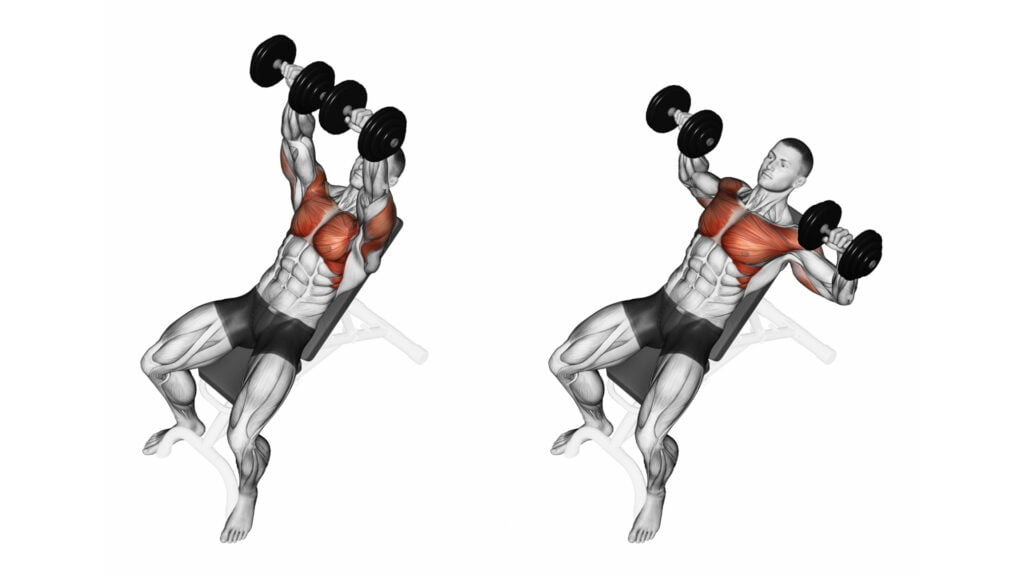Incline Dumbbell Bench Press
4 SETS - 12 REPETITIONS
1. Set Up:
Adjust an incline bench to an angle of around 30 to 45 degrees.
Sit on the bench with your back flat against the backrest and your feet firmly on the ground.
2. Dumbbell Selection:
Choose a pair of dumbbells that you can comfortably lift and control throughout the exercise.
Place the dumbbells on your thighs as you sit on the bench.
3. Starting Position:
With the dumbbells resting on your thighs, lie back on the bench.
Use your thighs to help lift the dumbbells, one in each hand, up to your chest level.
4. Grip and Hand Position:
Hold the dumbbells with an overhand grip, palms facing forward.
Your hands should be positioned slightly wider than shoulder-width apart.
5. Descent:
Inhale as you lower the dumbbells in a controlled manner to the sides of your upper chest.
Keep your elbows at a 45-degree angle from your body throughout the movement.
6. Pressing:
Exhale as you push the dumbbells back up to the starting position.
Focus on using the strength of your chest and shoulders to press the dumbbells.
7. Elbow Position:
Avoid letting your elbows flare out too much during the press. Keep them in a comfortable and controlled position.
8. Range of Motion:
Lower the dumbbells until your elbows are just below the level of the bench, allowing a good stretch in the chest muscles.
Press the dumbbells back up until your arms are fully extended but without locking out your elbows.
9. Finish:
Once you’ve completed your set, carefully lower the dumbbells back to your thighs.

Tips for Proper Incline Dumbbell Bench Press Form
Controlled Movement: Focus on controlled movements throughout the exercise to prevent using momentum.
Full Range of Motion: Lower the dumbbells until you feel a gentle stretch in your chest, and press them back up fully without locking out your elbows.
Steady Tempo: Perform the exercise at a steady pace, emphasizing the contraction in your chest muscles.
Warm-Up: Always warm up before starting your working sets to prepare your muscles and joints.
Proper Bench Angle: Adjust the bench to the appropriate incline angle that targets the upper chest effectively.
Spotter (Optional): If using heavy weights, having a spotter can provide added safety and assistance.
